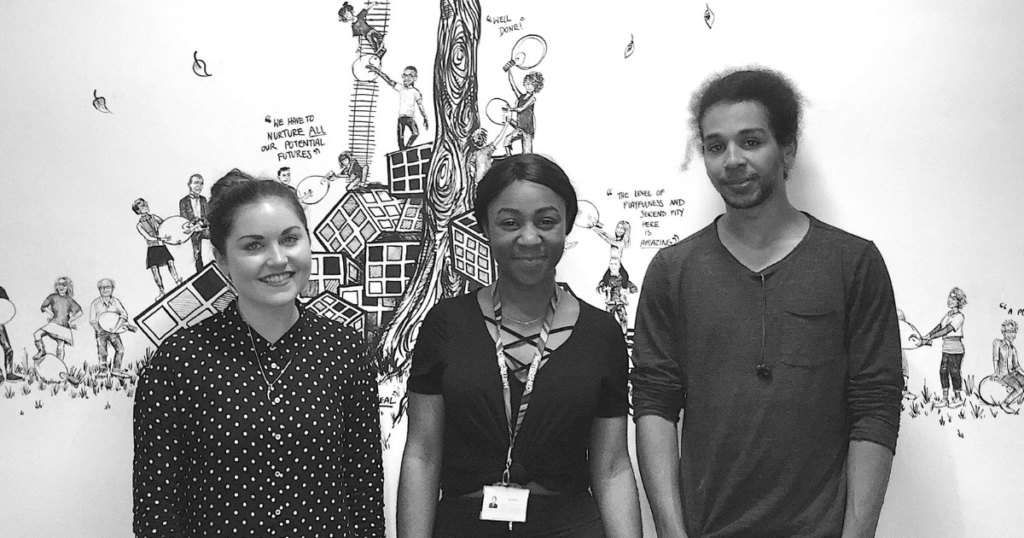Writing a book? Use mind mapping to improve your technique
Mind mapping has an enormous range of applications, from education to business, planning to aiding memory, strategy to innovation.
One popular use of mind mapping is to improve writing, whether that’s content marketing, fiction or non-fiction.
In this blog post, we’ll focus on the applications for writing fiction, helping you mind map your next book by:
- Developing characters and settings
- Crafting your plot and storyline
- Collaborating with your editor
Characters & Settings
Get to know your characters
Your characters are an essential element in your story. It is your characters who effect, and are affected by, your plot. Readers will picture your characters, talk about them, care about them, love or hate them.
Getting acquainted with your characters is an essential process for writing a book. Use mind mapping to create your characters and take it as an opportunity to really meet them.
Not all stories need detailed descriptions of characters, but it’s important to know them yourself. Once you fully understand your characters, they will do the hard work for you. They will move your story forward. You simply become the messenger who channels them and gives them life.
Create a mind map for each character, starting with their name in the centre. This is a close-up of your character that will help you explore their personality and attitude, visual features, the way they move and sound and the impact they have when they enter a room.
Subvert expectations
Using a creativity technique like mind mapping helps you to think outside the box and subvert expectations. What sort of unusual quirks do your characters have? How can you make them memorable, or even, unforgettable?
Develop back stories
Preparing back stories brings depth to your characters. Why do your characters behave in the way they do? What happened in their lives before the point your reader meets them? What made them who they are?
Create a large, contextual mind map that includes all of your central characters and their back stories to explain their behaviour, attitudes and defining features. Add context with notes, images and other supporting documents or media files. This is a resource that you can tap into for reference points as you move forward with your book.
Set the scene
Mind mapping is an excellent technique for painting your setting using language and images. Bring yourself into your fictional (or non-fictional) world so you are comfortable navigating your characters through it.
Take a back-stage look at your book’s setting, with the visual placement of any important objects or reference points included as words or pictures within your mind map.
Plot & Storyline
Formulate your story arc
You can use a mind map to work through your story arc, develop your plot and let your imagination run wild!
A story arc can be viewed as a formula for storylines, and it often follows a familiar pattern that starts with an exposition to set the scene before the action starts to pick up.
Rising action is often demonstrated through a conflict or challenge for the characters to overcome. This could be a trigger that sets the plot into motion, or a quest where characters respond to the trigger. It could be an unexpected event or a critical decision a character makes.
The climax of the story happens when the plot reaches its peak, followed by falling action and a resolution where the story comes to an end.
This entire journey can be mapped out visually with a mind map. It is a storyboard, but with mind mapping software, it can become a movable feast that can easily be reworked and adapted.
Unexpected directions
The story arc may be formulaic, but a book storyline can (and should) be inventive and unpredictable.
Use a mind map to generate as many ideas as possible. Don’t review or discount them until you’re finished, then evaluate, scale these back and focus on your strongest, most original or unusual ideas.
The process of mind mapping will open up different and unexpected directions for your plot, helping you generate the twists and turns necessary to hold attention and entice your reader to keep reading.
Adapt and problem solve
Change your mind as much as you want. Mind mapping software allows you to restructure your mind map easily. If you decide that a plot point should take place later in your story, you don’t need to redo any planning. Simply drag-and-drop the idea across the screen. Nothing is set in stone until your pages are bound and printed.
If something is not working out, start a new mind map to delve into the issue and apply some critical thinking. Add solutions (be wacky, be wild!) as ideas grow out of the mind map. You’ll find a way to overcome the challenge.
Chapters
Finally, take a top-down view of your chapter structure with a mind map. This means that, if you get lost in the plot, you can refresh yourself with the visual storyline and redirect where needed.
Collaboration
Work together with your editor or collaborators using Mind Map Pro. The software allows you to brainstorm in real-time, and when you are using different devices to connect to a shared mind map, you can see each other’s updates happen live. Use the chat tool to discuss your work and export your mind map to Microsoft Word to continue working offline.
Add tasks to your mind map, like character development and drafting a chapter. Set time estimates to improve your focus and productivity. Move tasks along a task board as you make progress towards your goals.
What’s next? Look through our Help Site for information about getting started with Mind Map Pro and sign up for free.



